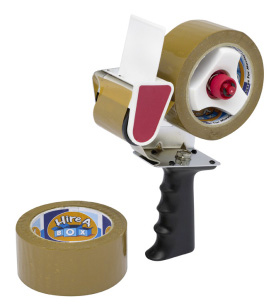







Get a Free Case of Tape with the purchase of BestPack’s all-in-one Case Form/Pack/Seal Station. Visit BestPack.com now for more taping machine promos.





 If you have a business that requires an efficient packaging system, what you need is a machine. And not just any type of machine—a taping machine. Manual packaging may seem more cost efficient at first but in the long run, you will find that manual packaging can drag your business down.
If you have a business that requires an efficient packaging system, what you need is a machine. And not just any type of machine—a taping machine. Manual packaging may seem more cost efficient at first but in the long run, you will find that manual packaging can drag your business down.

 As an entrepreneur, you know that a packing tape is mainly used for packaging products and supplies. But are you fully maximizing its properties? Do you know that you can also use packing tape as a marketing, advertising and security tool? You can do this by having your business’ name and logo custom printed on packing tapes that you will use to seal your products. This investment is useful in many ways. For starters, you can promote your brand every time you send out a package or a sealed product to a customer. This type of advertising is subtle and effective because your customers and even potential clients will be constantly reminded of the products and services that you offer. If you are willing to shell out a little bit more from your budget for custom printed packing tapes, you can even use packing tapes to promote new and upcoming products and add your contact information for maximum exposure and increased sales opportunities.
As an entrepreneur, you know that a packing tape is mainly used for packaging products and supplies. But are you fully maximizing its properties? Do you know that you can also use packing tape as a marketing, advertising and security tool? You can do this by having your business’ name and logo custom printed on packing tapes that you will use to seal your products. This investment is useful in many ways. For starters, you can promote your brand every time you send out a package or a sealed product to a customer. This type of advertising is subtle and effective because your customers and even potential clients will be constantly reminded of the products and services that you offer. If you are willing to shell out a little bit more from your budget for custom printed packing tapes, you can even use packing tapes to promote new and upcoming products and add your contact information for maximum exposure and increased sales opportunities. 2. Hold the front tab of the packing tape roll, pulling it at a downward angle through the slot between the dispenser roller and shield. There are also tape dispensers that have a shield to which you can pull down the tape and slide it through. Remember that the sticky side of the packing tape should always face downwards.
2. Hold the front tab of the packing tape roll, pulling it at a downward angle through the slot between the dispenser roller and shield. There are also tape dispensers that have a shield to which you can pull down the tape and slide it through. Remember that the sticky side of the packing tape should always face downwards.